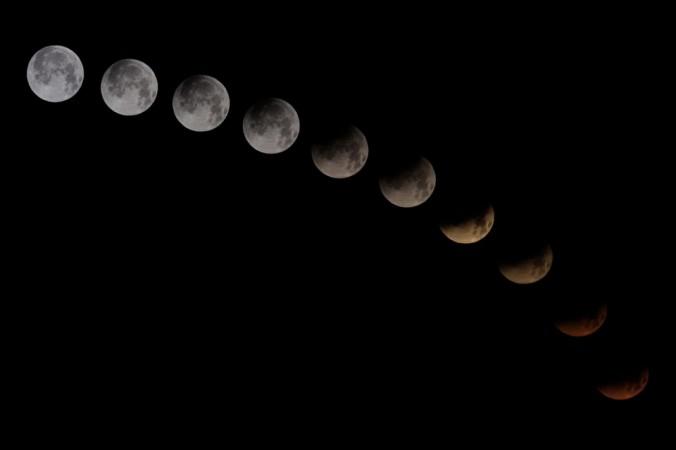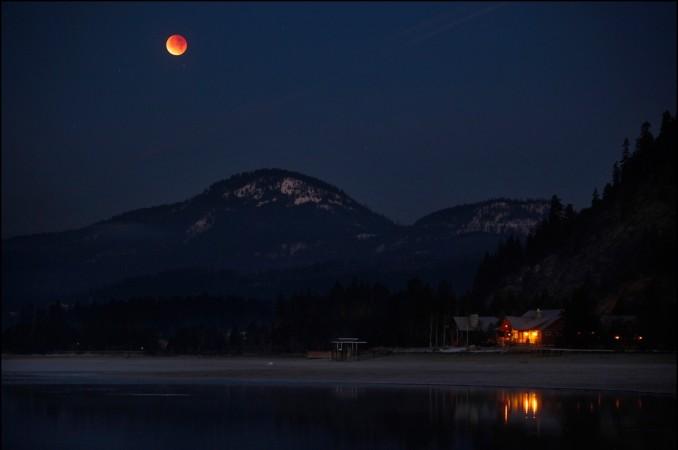
The second Blood Moon of this year will rise again on Wednesday, and for many around the world, the excitement is about the thrill to watch a near 'impossible' celestial phenomenon.
Rare Blood Moon Returns: Here's How to View Near-Impossible Lunar Eclipse
The rare Blood Moon, also known as the Hunter's Moon, will take place on 8 October, and it will be the second Blood Moon of 2014, the first being on 15 April.
This full Moon is so rare that it is also referred to as the impossible eclipse, as during the selenelion or horizontal eclipse both the Sun and the Moon will be visible on both horizons for one brief moment.
For astrology buffs, Wednesday's total lunar eclipse is important as this celestial phenomenon will happen while Mercury is in retrograde.
How does Blood Moon Happen?
A total lunar eclipse takes place when the Sun and Moon line up in such a way that the Earth is in between the two, blocking the Sun's light from reaching the Moon.
During this process, however, a tiny little bit of light manages to seep through the edge of the Earth's atmosphere to reach the Moon during the full lunar eclipse, creating the spectacular sight known as the Blood Moon.
Why is a Blood Moon Red?
During the total phase of the eclipse, sunlight shining through the ring of Earth's dusty atmosphere is refracted and so when the light is cast on the Moon's surface, it looks red.
The exact color of a Blood Moon, however, varies depending on the amount of dust in the Earth's atmosphere at the time. A full lunar eclipse happening around an active volcano spewing tons of ash into the upper atmosphere will trigger blood-red eclipse.

Blood Moon Eclipse Timings
The full lunar eclipse will begin in the wee hours of Wednesday, when the Moon enters Earth's dark shadow also called the umbra shadow at 2:15 a.m. PDT (5:15 a.m. EDT), according to NASA.
Then the umbra shadow will spread across the Moon's disk, moving from left to right.
The window for seeing both celestial bodies during the full lunar eclipse will be very narrow, between only two and nine minutes.
Those who can get in a position to see both the Eastern and Western horizons simultaneously will have the best viewing during the full lunar eclipse.
At 3:25 am PDT (6:25 am EDT) totality begins, when the Moon is fully engulfed in the umbra shadow and turns a shade of orange red.
The deepest or midpoint of the eclipse will be at 3:55 am PDT, and totality continues until 4:24 am PDT. The last phase of the partial eclipse ends at 5:34 am PDT.

Lunar Eclipse is Safe
Unlike solar eclipses, lunar eclipses are safe to watch with the naked eye.
The second of the Blood Moon rising, which is much bigger and much better unfortunately will not be visible to everyone.
According to Timeanddate, the Blood Moon eclipse will be mostly visible in North Carolina.
The western half of the United States will literally have front-row seats to watch the Blood Moon turn the skies red for about an hour on Wednesday.
Australians and residents of countries along the Pacific Ocean will also have the chance to see the eclipse
Europe, Africa and the Middle East, will not be able to see the full lunar eclipse.
Although people in India may not be able to view a complete eclipse, partial eclipse can be seen at moon-rise.
And if you miss this one, the next will be on 4 April, 2015. The last of this rare lunar phenomenon will take place on 28 September 2015.













